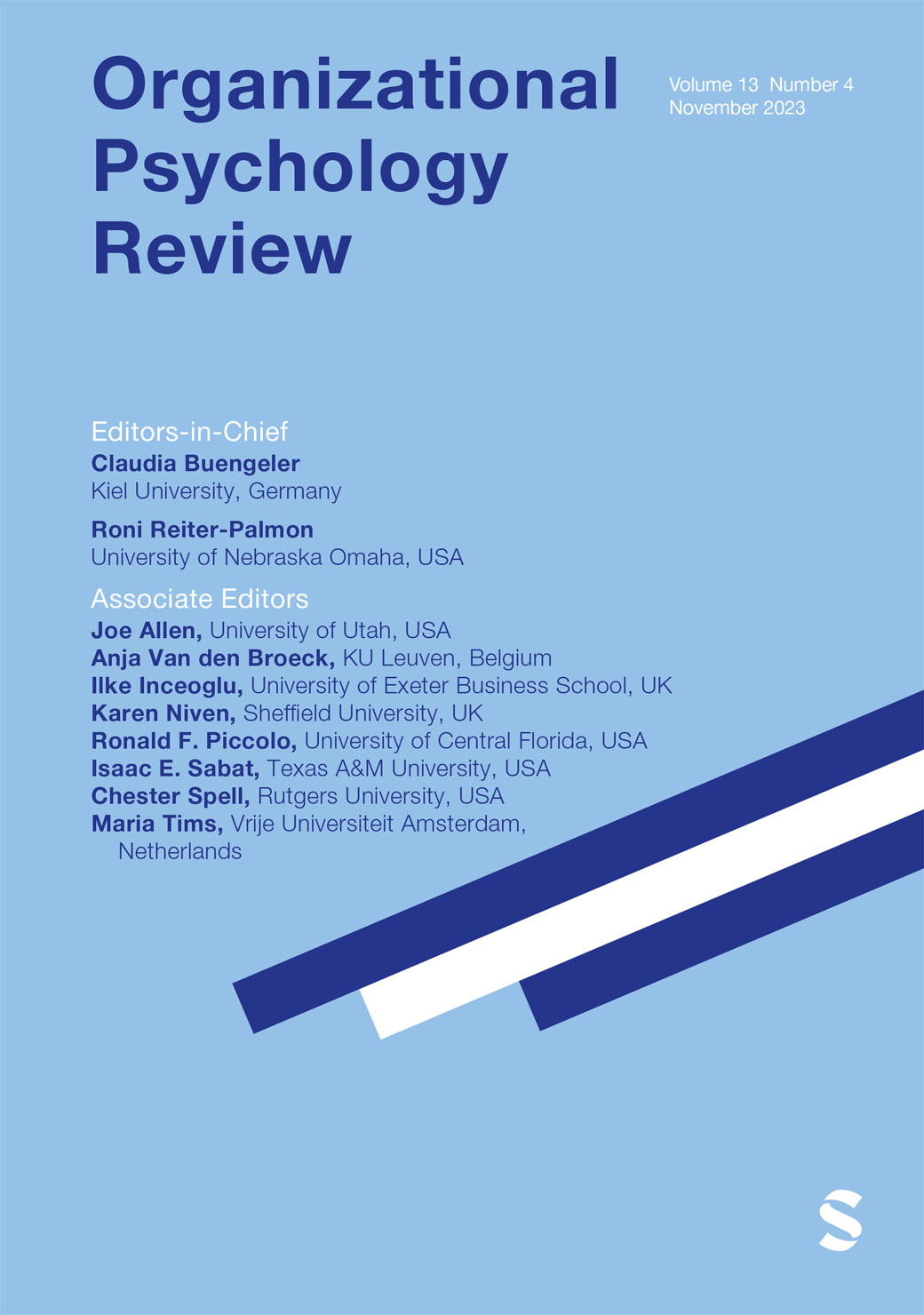Clarifying dynamics for organizational research and interventions: A diversity example
IF 7.1
1区 心理学
Q2 MANAGEMENT
引用次数: 3
Abstract
Interventions backfire for many reasons, one being that the dynamics governing a system are not well-understood. To better explain organizational phenomena, and to intervene in ways that yield desired consequences, an appreciation of the core insights from dynamics may be necessary to include into a researcher's toolkit. Although substantial buzz surrounds the term dynamics in organizational science, conceptual missteps are present in the literature, ultimately limiting its application. We provide a coherent description of what dynamics encompasses by (1) advancing a definition and of dynamics and comparing it to other longitudinal concepts, (2) proposing theoretical principles to help researchers apply dynamics concepts to their own research, and (3) demonstrating how dynamics may refine our ability to explain organizational phenomena and devise practical implications. Plain Language Summary Organizational researchers and practitioners are faced with many complex issues and understanding how they unfold over time is difficult. Those difficulties often lead to unexpected results when we try to address those issues. Viewing organizations from a more dynamic lens can shed light on how phenomena evolve over time as governed by the iterative application of mathematical rules. Illumination of dynamics can assist with better targeting interventions and understanding their potential effects. A dynamics lens also emphasizes continuing needs to improve research methods, such as collecting longitudinal data and engaging in computational modeling. To illustrate these points, we discuss how diversity interventions in organizations may be better understood once dynamics are applied. For example, organizations wishing to improve the diversity of their work forces must focus both on why underrepresented groups enter the organization and why they might leave. Focus on only one or the other is unlikely to generate the desired effect. Once identifying the drivers of both entering and leaving and how those factors might reinforce each other, interventions to improve diversity might be better targeted.澄清组织研究和干预的动力学:一个多样性的例子
干预措施适得其反的原因有很多,其中之一是控制系统的动力没有得到很好的理解。为了更好地解释组织现象,并以产生预期结果的方式进行干预,对动力学的核心见解的欣赏可能是必要的,包括在研究人员的工具包中。尽管在组织科学中围绕着动力学这个术语有大量的讨论,但在文献中存在概念上的错误,最终限制了它的应用。我们通过(1)提出动力学的定义并将其与其他纵向概念进行比较,(2)提出理论原则以帮助研究人员将动力学概念应用于他们自己的研究,以及(3)展示动力学如何改进我们解释组织现象和设计实际含义的能力,对动力学所包含的内容进行了连贯的描述。组织研究人员和实践者面临着许多复杂的问题,并且很难理解它们是如何随着时间的推移而展开的。当我们试图解决这些问题时,这些困难往往会导致意想不到的结果。从一个更动态的角度来看组织,可以揭示现象是如何随着时间的推移而演变的,这是由数学规则的迭代应用所控制的。动力学的阐明有助于更好地靶向干预和理解其潜在影响。动态视角还强调需要不断改进研究方法,如收集纵向数据和参与计算建模。为了说明这些观点,我们讨论了一旦应用了动态,如何更好地理解组织中的多样性干预。例如,希望改善其劳动力多样性的组织必须同时关注为什么代表性不足的群体进入组织以及为什么他们可能离开。只关注其中一个不太可能产生预期的效果。一旦确定了进入和离开的驱动因素以及这些因素如何相互加强,改善多样性的干预措施可能会更有针对性。
本文章由计算机程序翻译,如有差异,请以英文原文为准。
求助全文
约1分钟内获得全文
求助全文
来源期刊

Organizational Psychology Review
Multiple-
CiteScore
10.00
自引率
1.60%
发文量
25
期刊介绍:
Organizational Psychology Review is a quarterly, peer-reviewed scholarly journal published by SAGE in partnership with the European Association of Work and Organizational Psychology. Organizational Psychology Review’s unique aim is to publish original conceptual work and meta-analyses in the field of organizational psychology (broadly defined to include applied psychology, industrial psychology, occupational psychology, organizational behavior, personnel psychology, and work psychology).Articles accepted for publication in Organizational Psychology Review will have the potential to have a major impact on research and practice in organizational psychology. They will offer analyses worth citing, worth following up on in primary research, and worth considering as a basis for applied managerial practice. As such, these should be contributions that move beyond straight forward reviews of the existing literature by developing new theory and insights. At the same time, however, they should be well-grounded in the state of the art and the empirical knowledge base, providing a good mix of a firm empirical and theoretical basis and exciting new ideas.
 求助内容:
求助内容: 应助结果提醒方式:
应助结果提醒方式:


